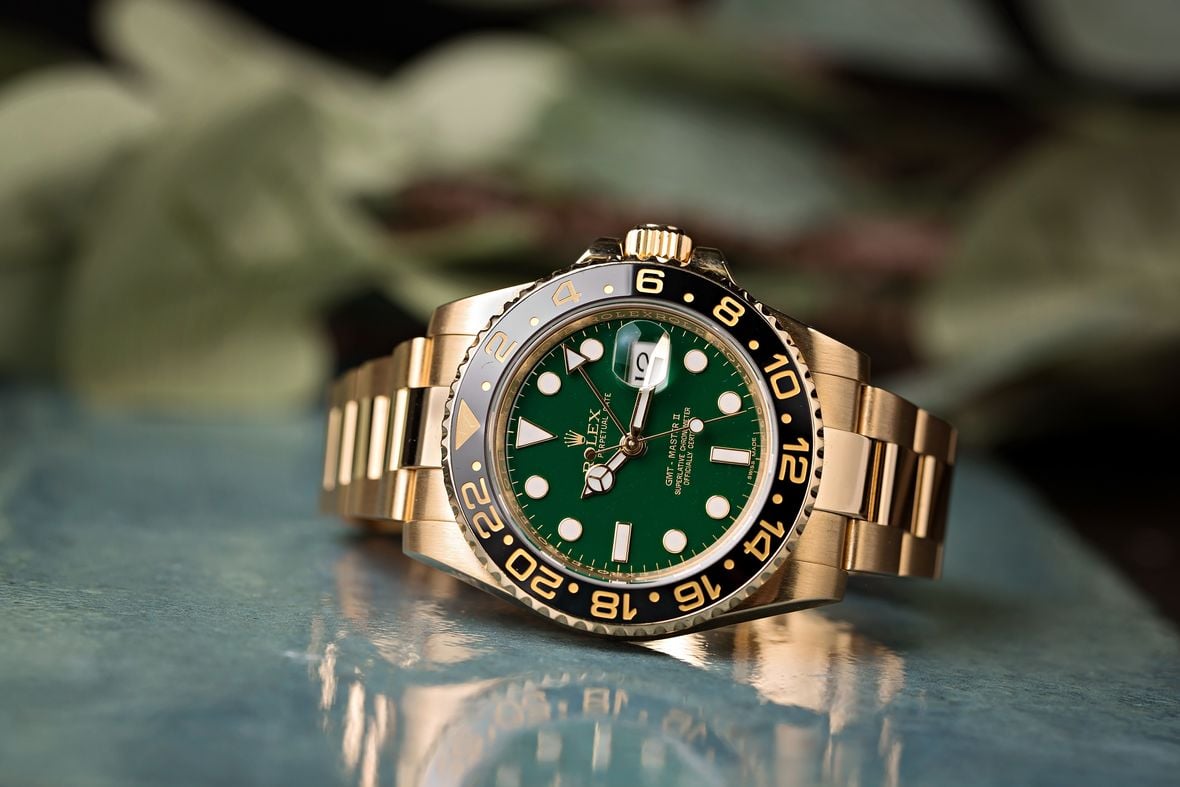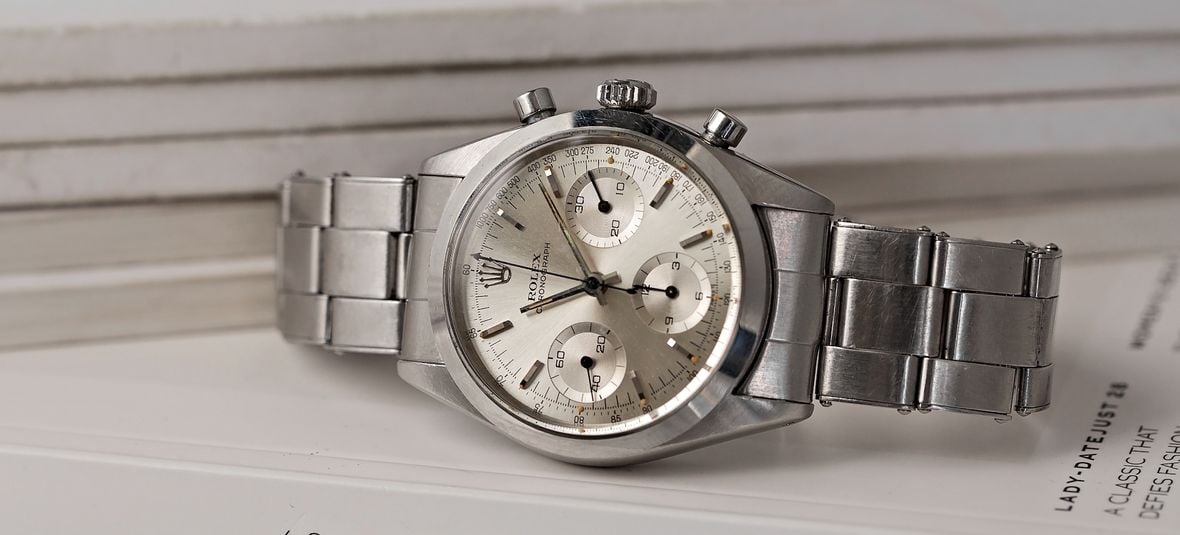Today, Rolex is the single most powerful luxury lifestyle brand in the entire world, and a byword for notions of success and achievement. The brand’s numerous innovations and pioneering designs have rewritten the rule book for watchmaking time and again, and its name and output are familiar to just about everyone, regardless of whether they have any interest in horology whatsoever.
However, just like everything, it all had to start somewhere. And for Rolex, it started with Hans Otto Wilhelm Wilsdorf, a Bavarian entrepreneur who, in 1905, set up shop at 83 Hatton Gardens in London’s jewelry quarter, with his brother-in-law Alfred Davis. Below we take a closer look at the complete history of Rolex and the origins of the world’s most famous luxury watch manufacturer.
Table of Contents:
About Rolex Watches
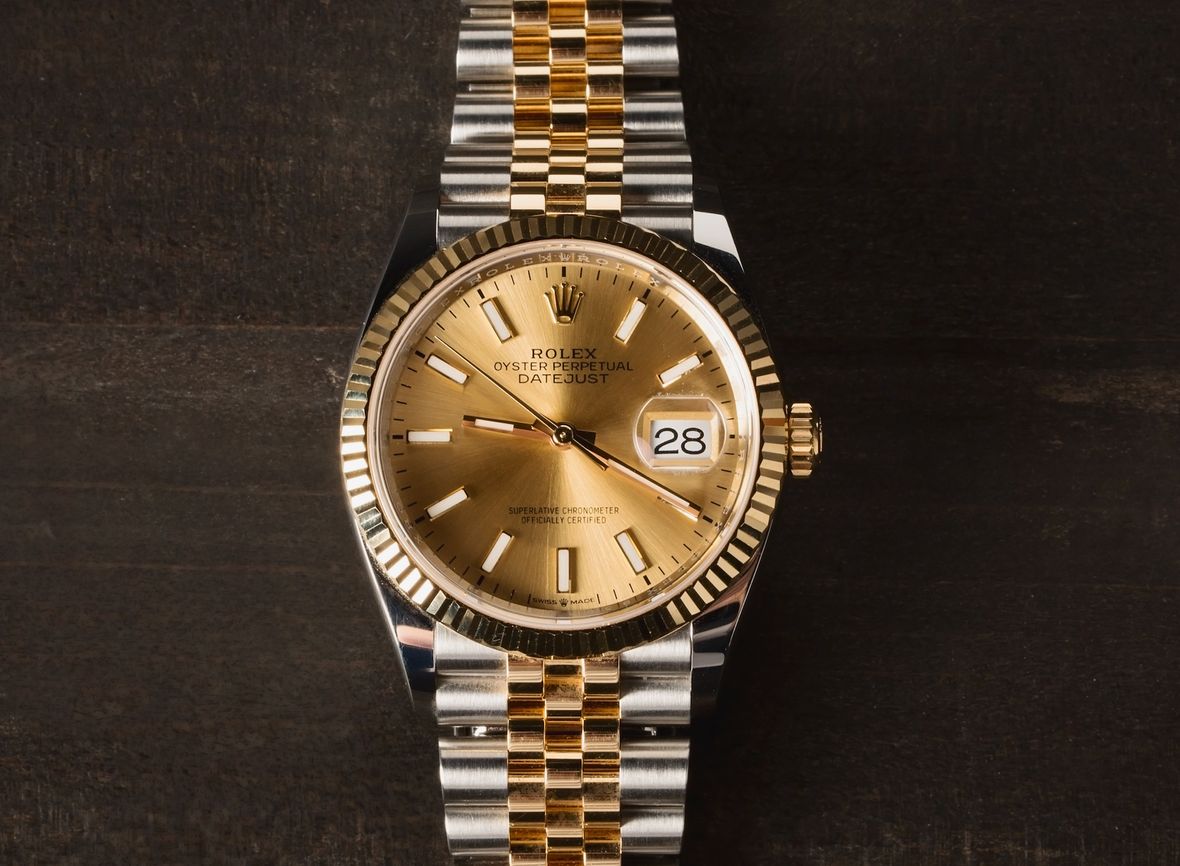
Rolex Company Facts:
– Founded in 1905 by Hans Wilsdorf.
– Headquarters are located in Geneva, Switzerland.
– Owned by the Hans Wilsdorf Foundation.
– Created the first waterproof watch in 1926.
– First self-winding Perpetual movement in 1931.
– Total annual production is approximately a million watches.
– Rolex watches are sold in more than 100 different countries.
Click here for our Ultimate Buying Guide on Rolex watches.
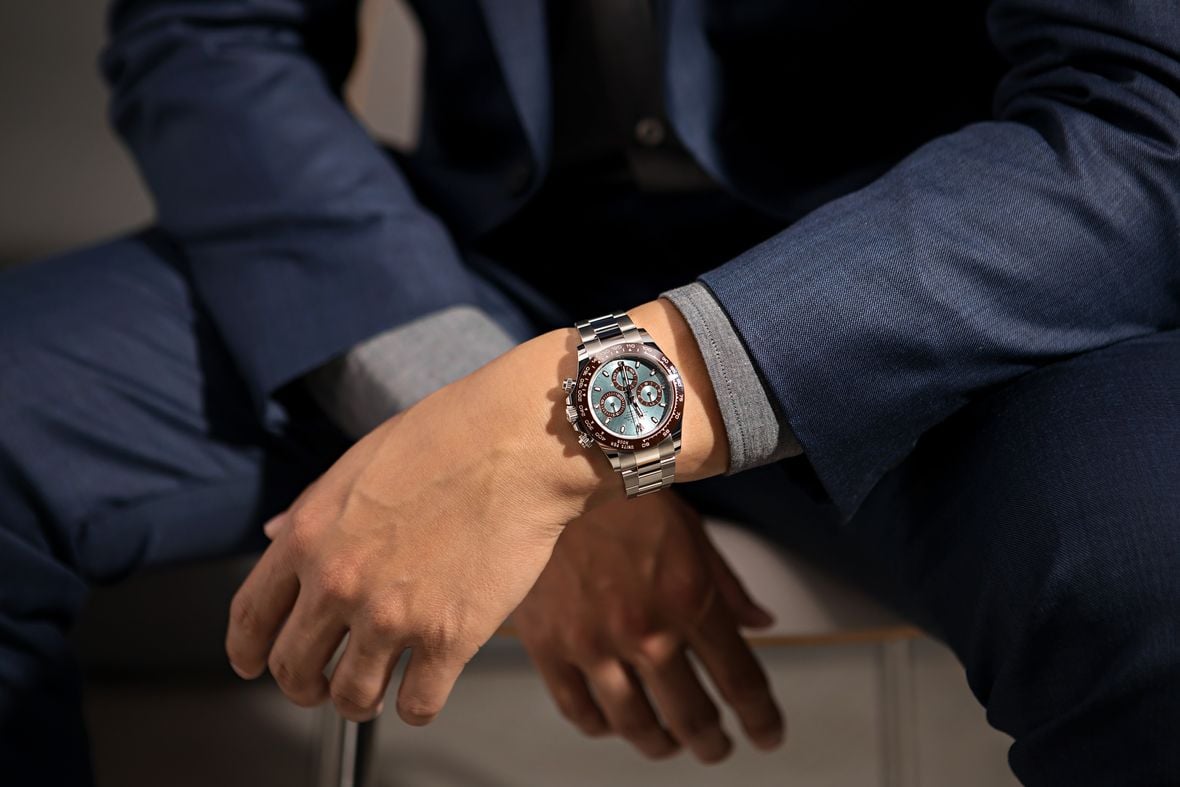
The Origins Of Rolex
In the beginning, Wilsdorf & Davis was merely a watch importer, a side of the industry Wilsdorf was already familiar with following his time working for a Swiss company named Cuna Korten in Geneva. His gift for languages, being fluent in English, French and German, meant that he was in charge of correspondence for the firm. The experience was to give him a strong grounding in marketing as well as instilling a deep love of horology.
The watches Wilsdorf & Davis bought in were sourced from all over Switzerland as well as other parts of the U.K., and came in varying qualities. These were then sold on to a network of retailers who would, more often than not, place their own names on the dials. The company’s own W&D logo, if it appeared at all, would be relegated to being stamped inside the case back.
However, while his business had become one of the most successful in the trade within just a few short years, Wilsdorf wanted to further establish his own company. He made it his mission to have his brand name included on all the watches he exported, something that no one else had been able to persuade jewelers to agree to before.
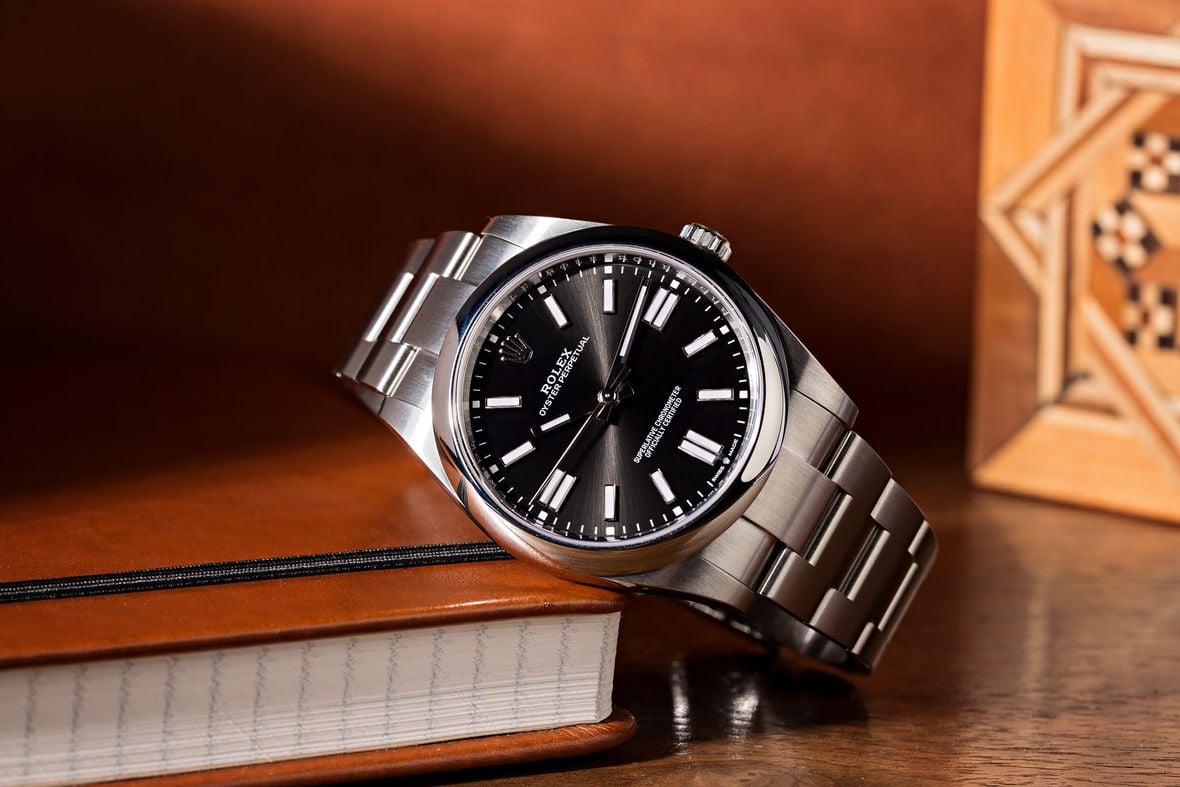
When Wilsdorf & Davis Became Rolex
By 1908, Wilsdorf had registered ‘Rolex’ as a trademark. The origin of the name has always been the source of debate, with some believing that it is taken from the phrase ‘hoROLogical EXcellence’, while others maintain that it is because the word sounds like a watch being wound.
In reality, it was simply chosen after a lot of trial and error. Wilsdorf had tried combining the letters in the alphabet in every possible way with no success. He wanted nothing more than a name that was short enough to fit well on a watch dial and one that would be pronounced the same in any language. Then, in his own words, “One morning, while riding on the upper deck of a horse-drawn omnibus along Cheapside in the City of London, a genie whispered ‘Rolex’ in my ear.”
As one of history’s true visionaries, he was fully aware of the power of branding and began a long campaign to get this new company name on the watches that passed through his hands. At first, he was able to have it inscribed on one out of every six models, alongside the jeweler’s own mark. Later it became one in every three, then around half. The initial reluctance of the retailers was worn down by a series of high profile successes Rolex was having in conjunction with longtime associates, the fellow Swiss manufacturer Aegler.
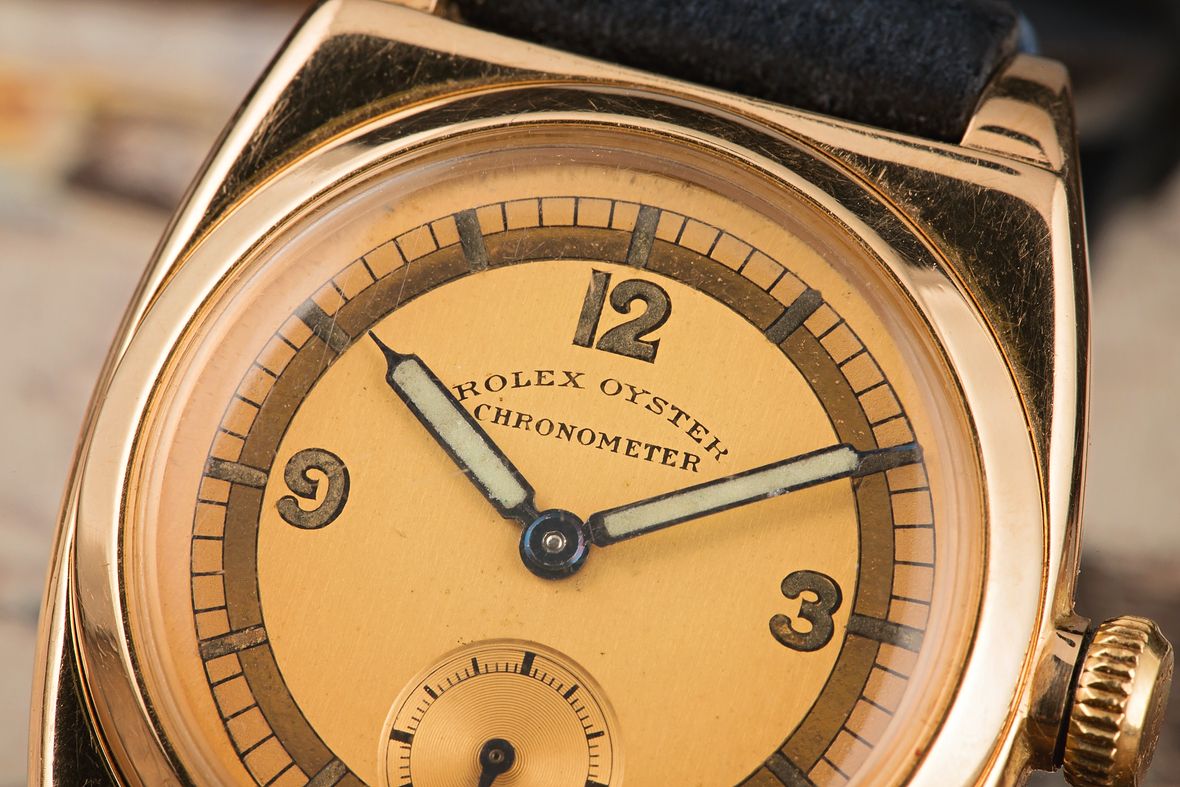
Early Victories
The relationship between Rolex and Aegler actually started the same year that Wilsdorf & Davis set up the business. That was when Wilsdorf placed with Aegler the largest order for wristwatches ever seen up until that point. It was especially noteworthy as wristwatches were the sole preserve of women at the time, with men more or less exclusively opting for pocket watches.
However, Wilsdorf was willing to bet on his ability to transform the image of the wristwatch and was attracted by Aegler’s commitment to the highest quality. The movements it made were not only extremely accurate, using lever escapements as opposed to the cylinder type found in cheaper models but they were also (crucially) small. This fit in perfectly with Wilsdorf’s efforts to prove wristwatches could be just as accurate and reliable as pocket watches.
In 1910, that assertion was vindicated when one of Rolex’s models won a First Class Chronometer Certificate from the rating office in Bienne, Switzerland. Later, in 1914, another piece became the first ever wristwatch to be granted a Class A Chronometer Certificate from the Kew Observatory in England, the only non-marine timepiece to ever achieve it. The firm of Wilsdorf & Davis was fast becoming synonymous with a commitment to uncompromising excellence.
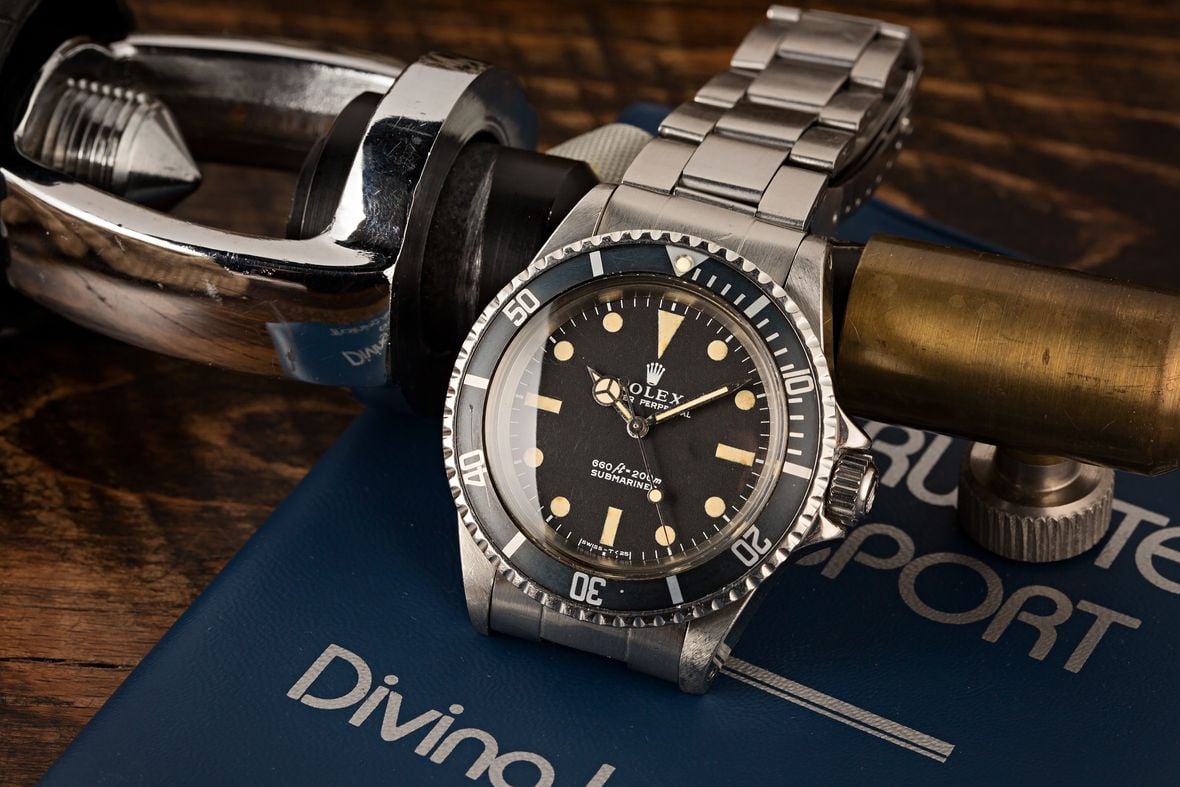
The War Years
Unfortunately, 1914 was also the year that WWI broke out in Europe. For Wilsdorf, that cataclysmic event ultimately brought with it both pluses and minuses.
First, he believed that having a German sounding name was going to do his business no favors in England, so Wilsdorf & Davis officially became Rolex in 1915. Subsequently, once the war had ended, the British government slapped an enormous 33.3% tax increase on luxury goods entering the country, and that included watches. This forced Rolex to move its main offices to Bienne in order to avoid the levy and by 1919, Rolex had left London for good.
On the other hand, the horrors of the war had proved, once and for all, the undisputed utility of the wristwatch. As it was the first conflict conducted over vast distances, line-of-sight communication methods were no longer of any use, and attacks were coordinated by radio. This meant that commanders of various regiments needed accurate timepieces in order to be able to launch offenses simultaneously, and pocket watches were just too cumbersome to be effectively used by troops during combat or in the field.
Soldiers had at first taken to modifying their standard-issue pocket watch models with wire lugs soldered top and bottom to hold a strap. However, as the fighting continued, several manufacturers started to produce so-called ‘trench watches’ specifically for them, and this included Rolex. Aegler’s small and precise movements were ideal, keeping these pieces a wearable size to fit under a sleeve without sacrificing reliability or accuracy. By the end of the war, with those serving on the frontline returning home with watches strapped to their arm, the wristwatch was no longer a delicate fashion item exclusively worn by women; they had become a utilitarian accessory for even the toughest of men.
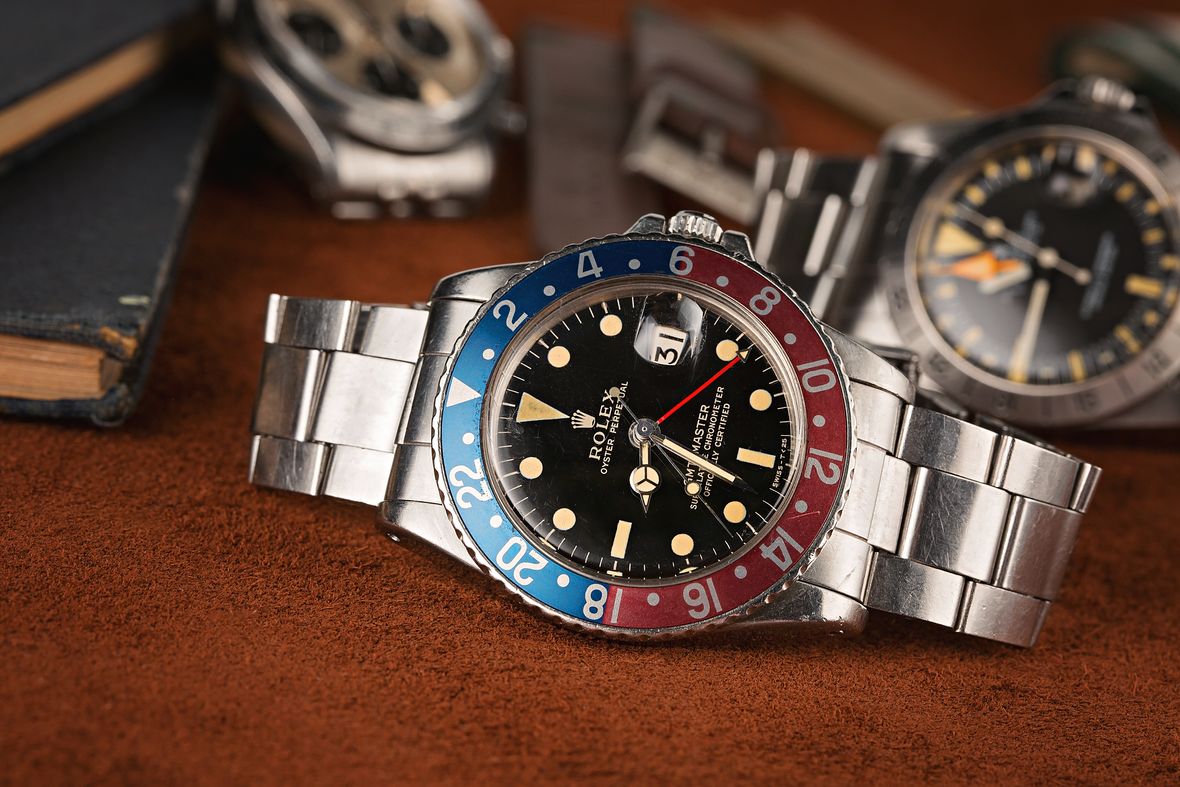
Continued Success & The Birth of The Rolex Testimonee
In the years between the wars, Rolex continued to assert its independence, with Wilsdorf determined to control every aspect of his company.
In 1924, he partnered with fellow luxury watchmaker Carl F. Bucherer to defy being consumed by the Federation of Swiss Watch Manufacturers, the virtual cartel that governed the industry. The following year, he invested heavily in an advertising campaign that was successful enough to convince dealers to include the name Rolex on five out of every six watches they sold.
In 1926, Rolex came up with perhaps the single most significant innovation for the wristwatch in its history: the Oyster case. Waterproof, dustproof and particularly robust, this more than anything ended the dominance of the pocket watch. For the first time, a wristwatch was durable enough to be worn all-day and throughout a variety of different demanding activities. This also marked the last time a model would leave their production line without the name ‘Rolex’ on the dial.
Hot on the heels of that breakthrough, Wilsdorf capitalized on the effectiveness of the waterproof Oyster case by installing the first of many Rolex Ambassadors – or ‘Testimonees’ as they have become better known. A typical marketing masterstroke, Wilsdorf found that by aligning his products with some of the most important and successful celebrities of the day, it gave tacit impetus to potential customers that they too could aspire to great heights with a Rolex timepiece on their wrist.
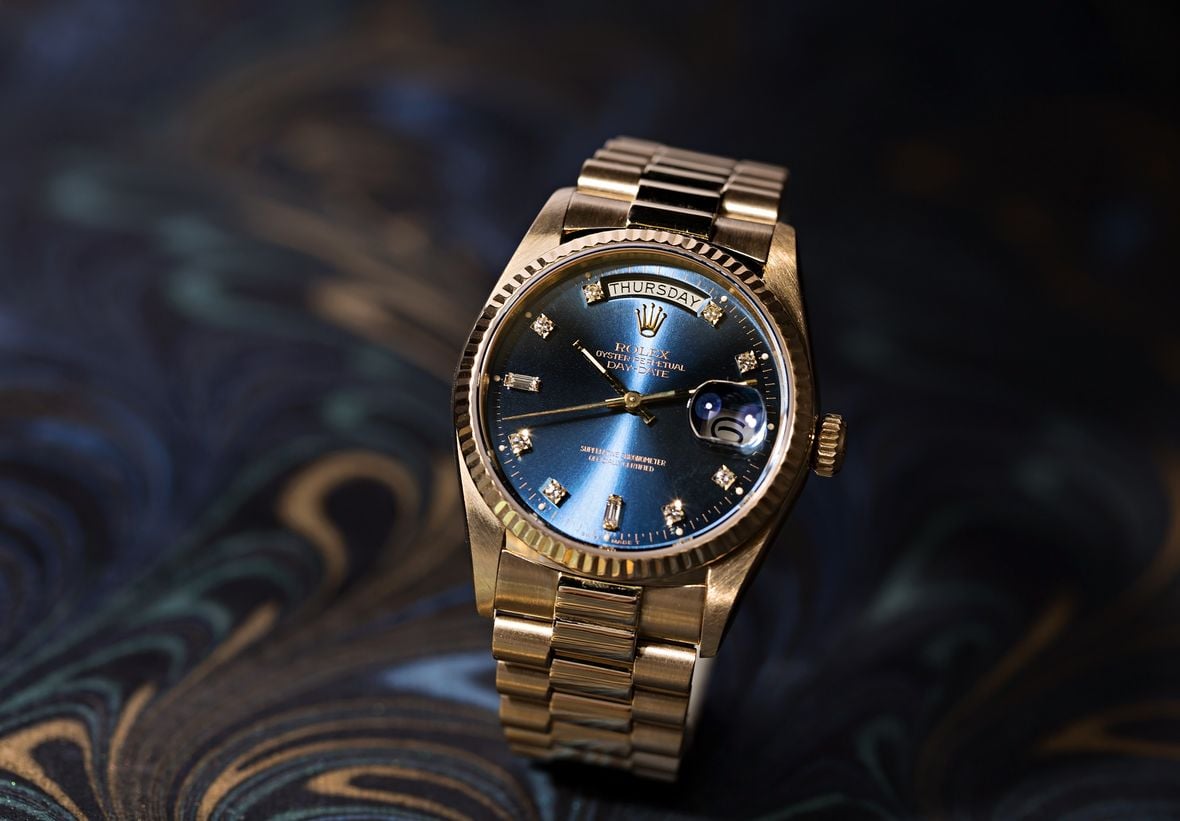
A Swim Across the English Channel
The original Rolex Testimonee was the professional swimmer, Mercedes Gleitze. Not only had Gleitze become the first person to swim the Straits of Gibraltar and the first to swim between Cape Town and Robben Island and back, she also broke the world endurance record with an incredible 46-hour plunge in 1932.
However, before that, she was to become the first English woman to swim the 22-mile crossing between England and France in 1927. After some controversy over timings following her first attempt, it was decided Gleitze would take on the challenge a second time, in a so-called ‘vindication swim.’ And when word of this reached Wilsdorf, he managed to persuade the young athlete to wear one of his newly created Oyster watches on a lanyard around her neck.
Even though the bitterly cold waters of the seas around Great Britain defeated her with just a mile to go, her efforts were so impressive that it was agreed that she would be awarded the title of the first English woman to have swum the Channel for the original attempt. As for Rolex, the watch that Gleitze carried with her, and which had been submerged in the icy waters for more than 10-hours, it had not let in a single drop and was working perfectly.
This led to the company kicking off an advertising onslaught. The ‘Wonder Watch That Defies The Elements’ bellowed the full front page ad in the London Daily Mail the following day, and retailers started displaying Rolex watches submerged in fish tanks in store windows.
The Testimonee campaign has been a massive success for Rolex, and one that has been copied by many other brands (as have most of the manufacturer’s various innovations). Rolex’s list of ambassadors past and present reads like a ‘who’s who’ of the most influential players of all time and includes (in no particular order), Sir Malcolm Campbell, Edmund Hillary and Sherpa Tenzing Norgay, Arnold Palmer, Gary Player and Jack Nicklaus, Jackie Stewart, Tiger Woods, Roger Federer, and James Cameron – among many others.
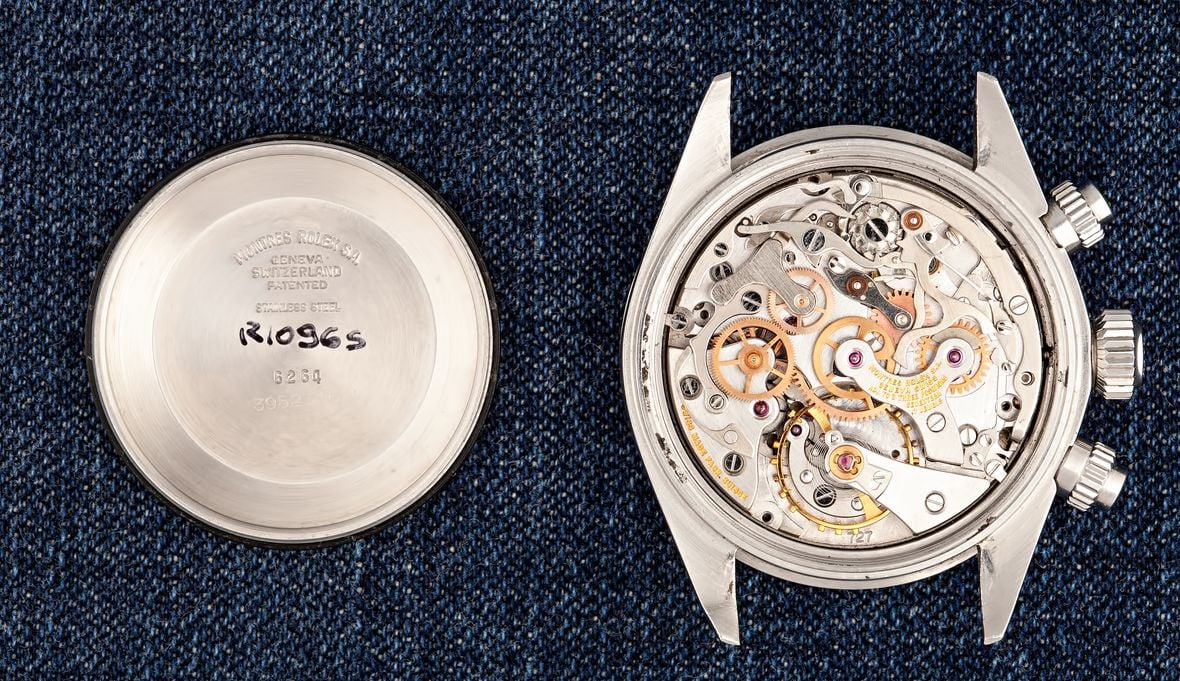
Perpetual Rolex
The Oyster case had given the wristwatch a robust nature that it had never had before and elevated it to an entirely new level of everyday practicality. However, even still, there was one final piece of the puzzle still outstanding.
Although self-winding movements had already been developed, they were still fairly rudimentary and had met with little commercial success. It was Rolex and longtime partner, Aegler who would come together and build on the work of English horologist, John Harwood to achieve the first practical automatic caliber.
In 1931, Rolex unveiled the Perpetual mechanism, utilizing a weighted rotor placed on a center axis that could wind the mainspring in both directions from just the movement of the wearer’s wrist. Arguably an invention that advanced the greater watch industry as much as the Oyster case, the self-winding caliber brought an unheard of convenience to the wristwatch.
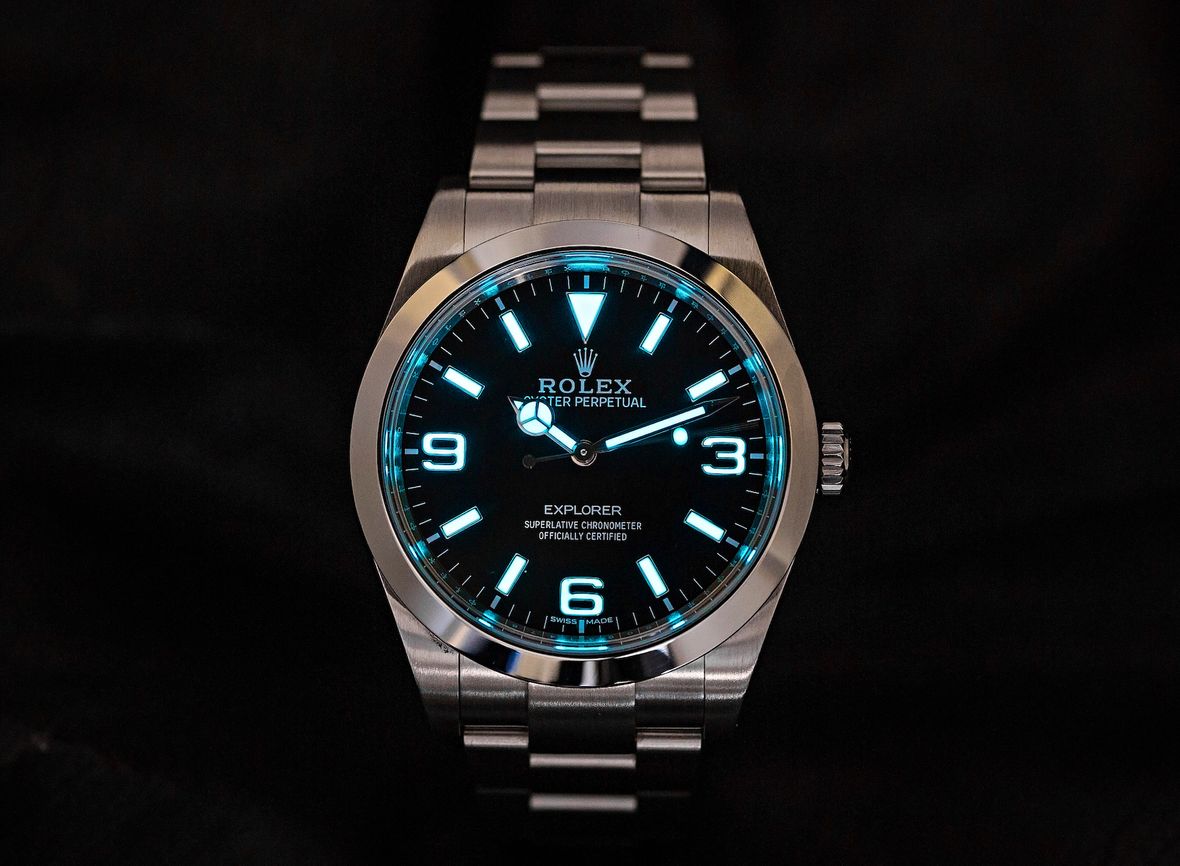
Rolex Dominance
WWII saw Switzerland retain its neutrality, meaning that it was one of the few countries not forced to shut down watch manufacturing to supply the war effort. As a result, by the end of hostilities, the Swiss watch industry was way ahead of other nations, and it is a position that it has held ever since.
With that in mind, it was during the 1950s when Rolex truly came of age. In the space of just four years, the brand changed the game completely by launching some of the most enduring legends in watchmaking – the Explorer, Submariner, GMT-Master, Day-Date, and Milgauss. Rolex then followed that up in the 1960s with the first of the Cosmograph Daytona watches and the debut Sea-Dweller, and in the 1970s gave us the Explorer II.
Those models, along with the Datejust from 1945, really created the foundation for the brand’s entire collection, and they still do to this day. Unlike many other manufactures who release all-new watches on at least a semi regular basis, Rolex’s philosophy has long been to stick with its core offerings and periodically improve upon them, with outright perfection being the end goal.
Although Rolex’s contemporary portfolio might have one or two fresh names (the Yacht-Master II and the Sky-Dweller, for instance) the bulk of the brand’s core offerings can trace their roots all the way back to the mid-20th century. This has resulted in some truly classic and timeless designs, along with providing the Rolex roster with a coherence pretty much unmatched among its contemporaries.
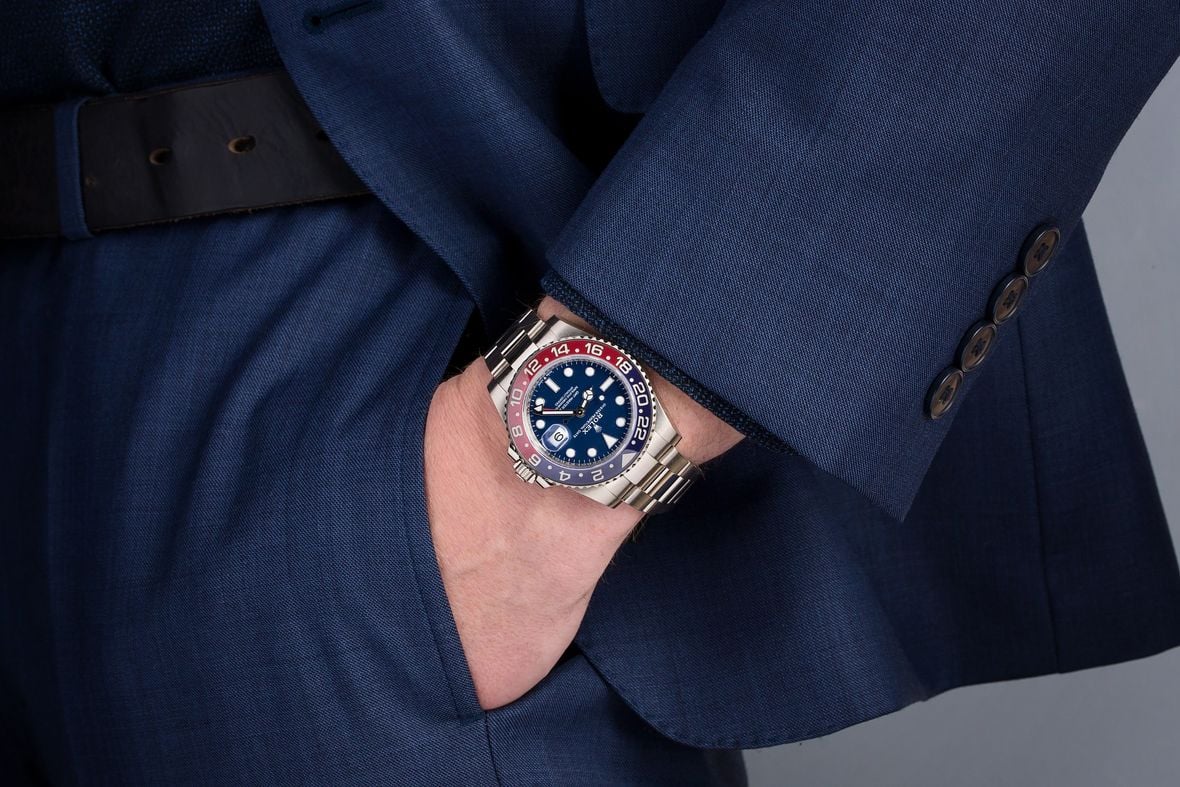
From Tools to Status Symbols
However, even the most famous watchmaker in the world is not immune to disruptions. The quartz crisis of the 1970s and ‘80s forced the company to change tactics, but it ended up spring boarding the brand to new heights. Unable to compete with the new technology in terms of price or accuracy, Rolex instead repositioned itself as the purveyor of the ultimate luxury lifestyle.
By ramping up its use of precious metals, playing up the sheer artistry of mechanical watchmaking, and pricing its watches out of the reach of the average buyer, Rolex gave itself the sort of exclusivity that transformed its creations from well-made but affordable accessories into bona fide luxury status symbols.
Today, the name Rolex, like Rolls Royce, is a word that has become a synonym for refinement, opulence, and personal accomplishment. Rolex watches are the type of timepieces that you buy once you have reached a certain stage in your life, and they often mark the point of a major triumph. Just like the old Rolex slogan goes, “a crown for every achievement.”
From the humblest of beginnings, Rolex has become undoubtedly the most famous and successful luxury watch manufacturer on this planet. The company is a true giant in the world of horology, but it is a position that is well deserved. The Rolex brand as we know it today is the byproduct of an unrelenting drive for excellence and over a hundred years of refinement and development – all in the pursuit of the brand’s singular goal of making the world’s best wristwatch.
